Food in Kyrgyzstan was hearty, filling, and deeply rooted in nomadic traditions. Influenced by Central Asian, Russian and even Chinese cuisines, Kyrgyz food reflects the lifestyle of people who have lived for centuries between mountains and steppes: it’s simple, caloric enough to sustain long days of work or travel, and often centred around meat (especially lamb, beef, and horse). Although it was very different from what I eat at home, I really took a liking to those hearty dishes, especially the quality of the wheat flour-based pasta, which was above everything else!
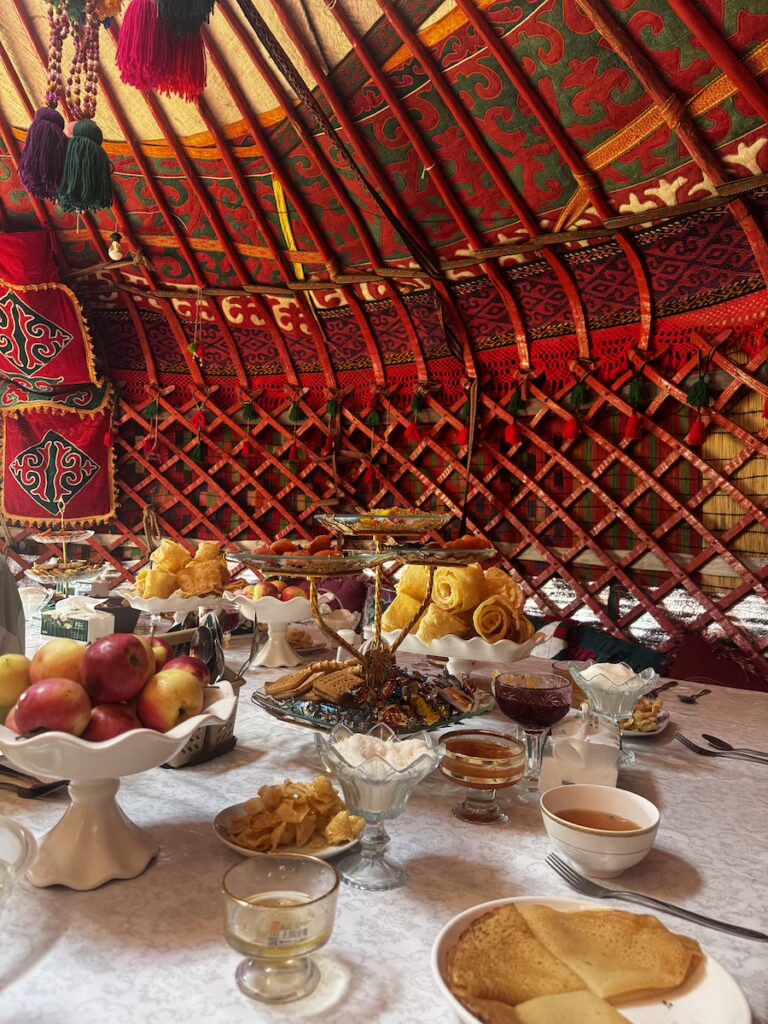
One thing that also struck me when eating in Kyrgyzstan was the style of dining: many small plates are placed on the table from the very beginning with bread, sweets, jams, butter, pickles, and then hot dishes are served one after the other. Or at least that’s how we experienced it when camping in yurt villages with local families on our horse-riding trek to Song-kul lake. It felt both generous and convivial, encouraging people to share, talk, and try a bit of everything.
But without further ado, here are the Kyrgyz dishes I tried and that I can recommend you taste during your own trip.
- Manty (dumplings)
- Besh-barmak
- Kuurdak
- Plov (pilaf rice)
- Ashlan-Fu (Karakol’s cold noodle soup)
- Lagman (noodles)
- Shorpo (soup)
- Nan (bread)
- Pear lemonade
- Kymyz (fermented horse milk)
Manty (dumplings)
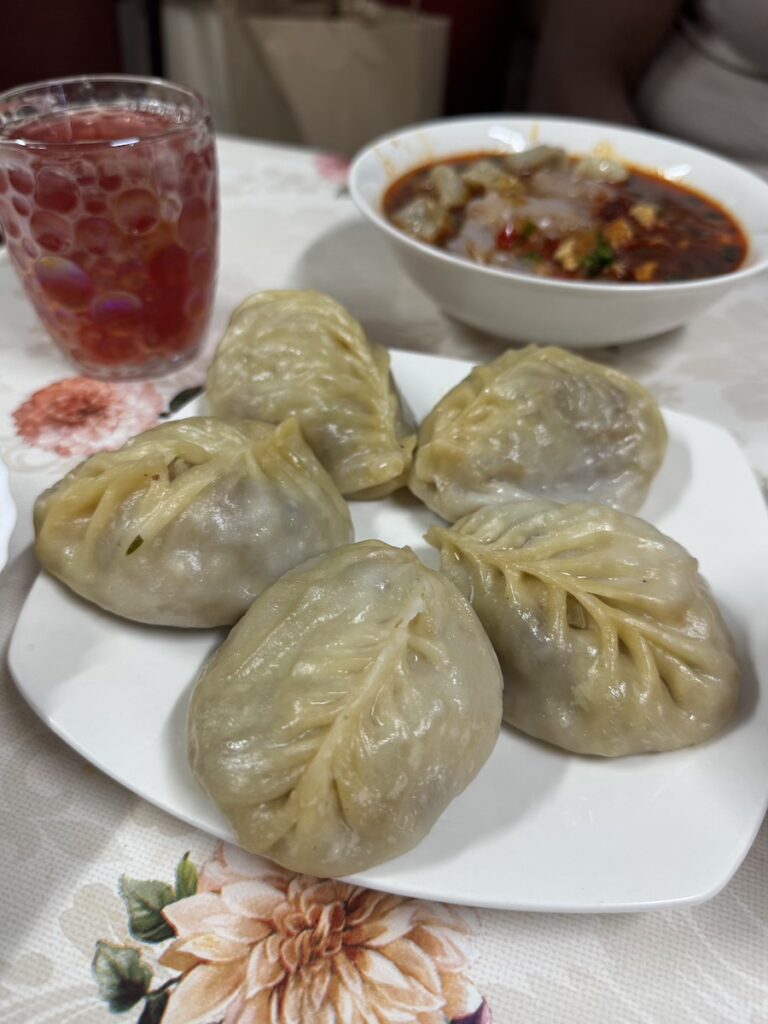
Manty are steamed dumplings, usually filled with minced meat (often lamb or beef) and onions. They’re juicy, warming, and perfect for travellers like me who are dumpling fans. They reminded me a little of Chinese jiaozi, but bigger and softer. I had very similar dumplings in shape and stuffing in Mongolia. There was often an option for “pumpkin manty” on the menu but I really managed to have them only once and that was in Uzbekistan!
Anyway, you’ll find meat manty everywhere, from bazaars to small restaurants. We had excellent manty in Bishkek at a large chain restaurant called NAVAT, where you will mostly find everything you’d ever imagine (also western food but we kept to local tries) and at the local food market in Karakol (called “ashram-fu alley”, ashram-fu being the local dish as we’ll see further down).
Besh barmak
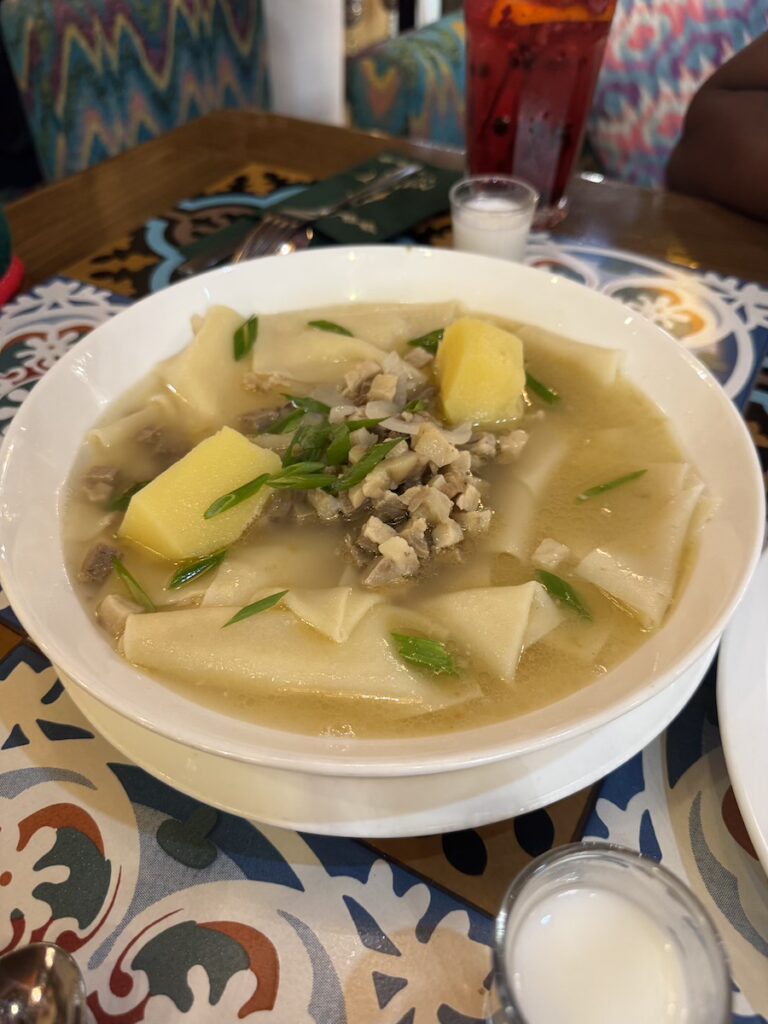
Literally meaning “five fingers” in Turkic language, besh barmak is considered one of Kyrgyzstan’s national dish. Traditionally, it’s eaten with your hands, though in restaurants you’ll get a fork, which I used. It consists of flat noodles topped with slow-cooked meat (often lamb or horse), served in a rich onion broth. We’ve had versions of it with shredded pasta and without much broth too.
It’s the kind of dish you’ll be served at a celebration, but it’s also available in restaurants. Hearty, filling, and definitely one to try if you want a taste of Kyrgyz culture. Another name for besh barmak is “tuuralgan et“, in Kyrgyz language.
We had our first besh barmak in Bishkek and then in Karakol, at Dastorkon restaurant. I may be my favourite Kyrgyz dish after manty, if I’m honest. I guess I just love how simple and filling it was. That’s also when I could really enjoy the quality of the pasta there: it was unexpectedly light, and not soggy at all despite the warm broth.
Kuurdak
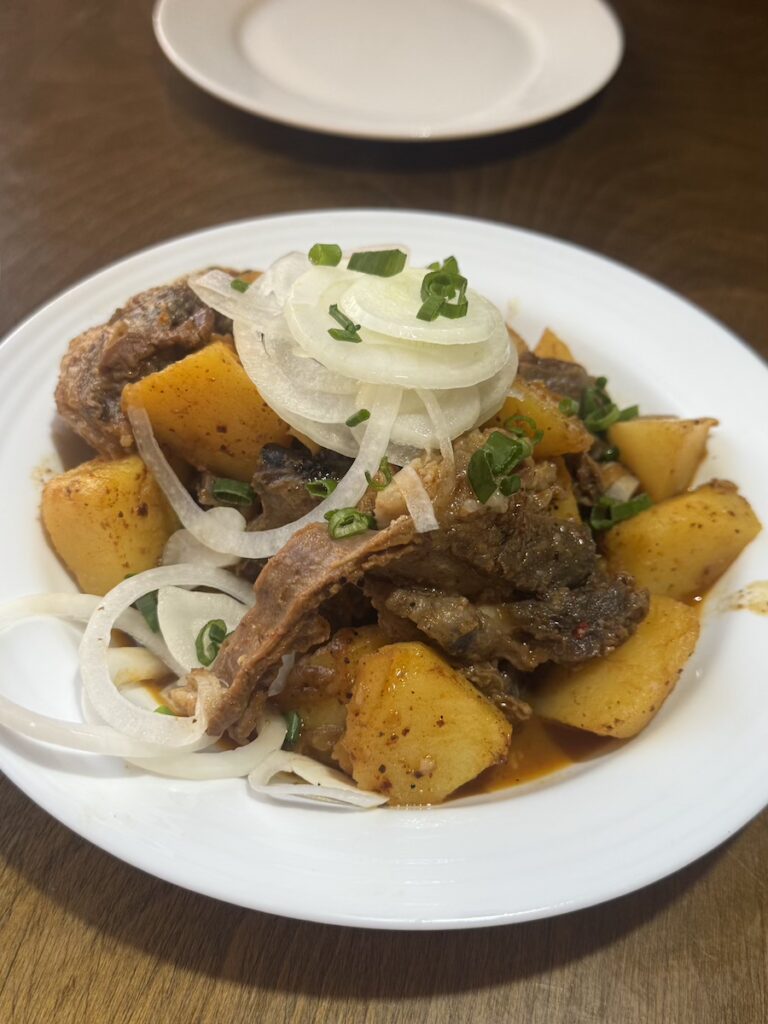
Kuurdak is a simple but delicious stir-fry of meat (usually lamb or beef) with onions and potatoes, sometimes peppers. It’s rustic, slightly oily, and comforting, the sort of food you want after a long day hiking or riding in the mountains. It really reminded me of Chinese sauté, and was pretty straightforward. I think the closeness to Chinese food brought me familiarity and comfort during that trip.
Plov (pilaf rice)
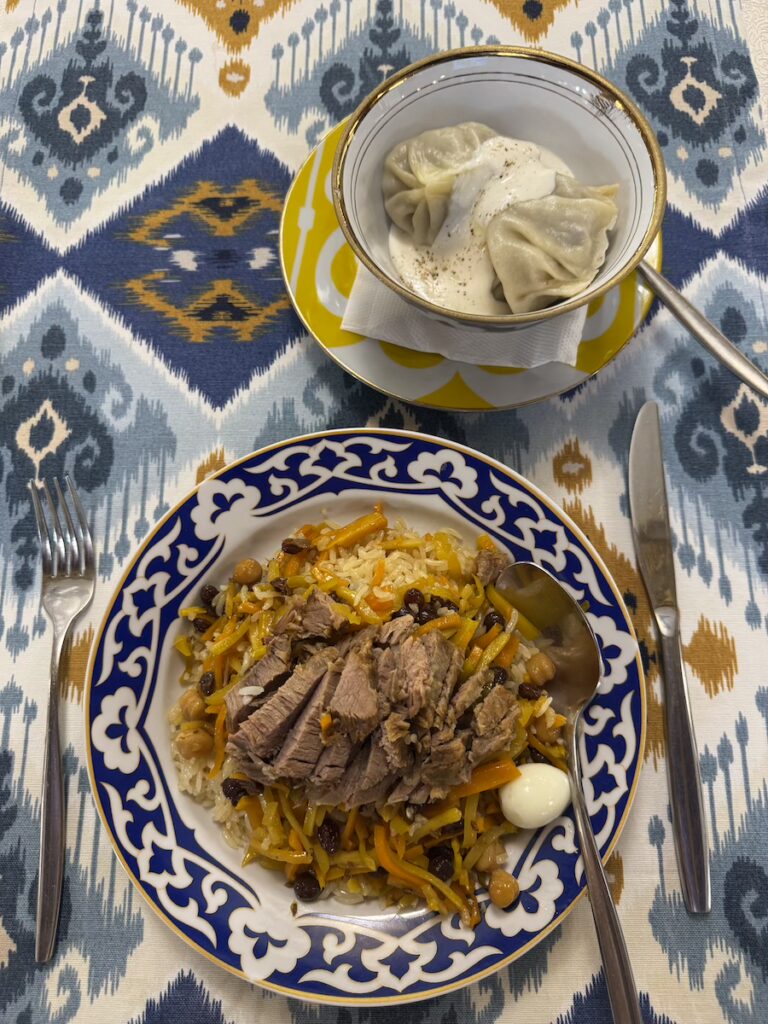
Plov (or pilaf) is found all over Central Asia, and in Kyrgyzstan it’s just as beloved. It’s a dish of rice cooked in oil with carrots, onions, and meat, often lamb. Depending on the cook, it can be heavy or lighter, but when done well it’s full of flavour and perfect to share. I had it a few times in Kyrgyzstan and again later in Uzbekistan, where it’s even more of a national treasure.
I can’t say I was passionate about plov in Kyrgyzstan. One plov I had in Bukhara (Uzbekistan), remains on my mind though, it was perfectly cooked, not too greasy and was enhanced with raisins. To be completely fair, some Kyrgyz people we met event told us they thought Uzbek plov was better!
Ashlan-Fu
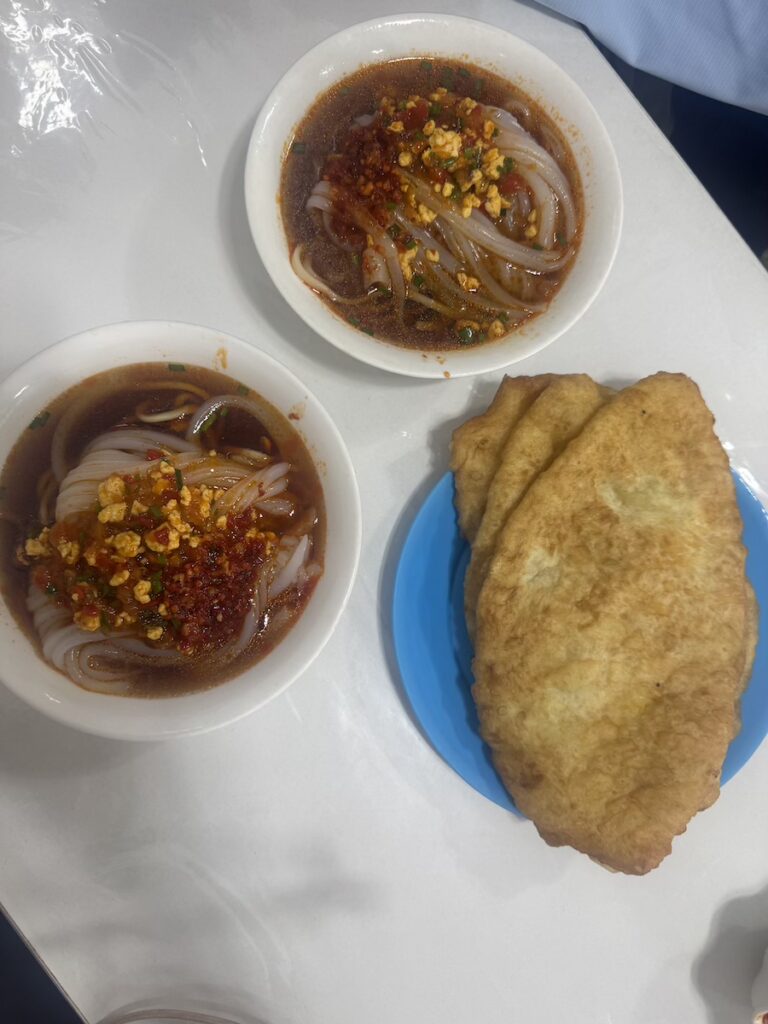
Karakol’s signature dish, and an albeit surprising one! We tried it on Eleonora’s recommendation, the young Kyrgyz friend we made on our very first evening in Karakol. Ashlan-Fu is a cold noodle dish in a tangy, spicy sauce. The noodles we had were a mic of wheat flour noodles and transparent whiter lighter ones. The dish is of Dungan (Chinese Muslim) origin and became hugely popular in the region.
Usually eaten for lunch, it’s refreshing, cheap, and filling: perfect on a hot summer’s day and our young guide’s favourite! Locals always pair it with fried bread, and I totally recommend doing the same. I usually don’t like fried dips but this matched perfectly with the spicy soup. We had our first one in “Ashram-fu Alley” and a second one on the next day in Karakol’s bazaar.
Lagman (noodles)
Lagman sound a lot like “la mian” (noodles in Chinese Mandarin) so my first guess was that it must be influenced by Chinese cuisine. But there was definitely a Kyrgyz twist. Lagman are hand-pulled noodles, usually served in a savoury broth with vegetables and meat. They can also be stir-fried and I had it with tomato sauce and a fried egg once. I loved the chewiness of the noodles and the mix of spices and it was a kind of comfort food towards the end of the trip. You can find Lagman almost everywhere, as it’s a very common dish.
Shorpo
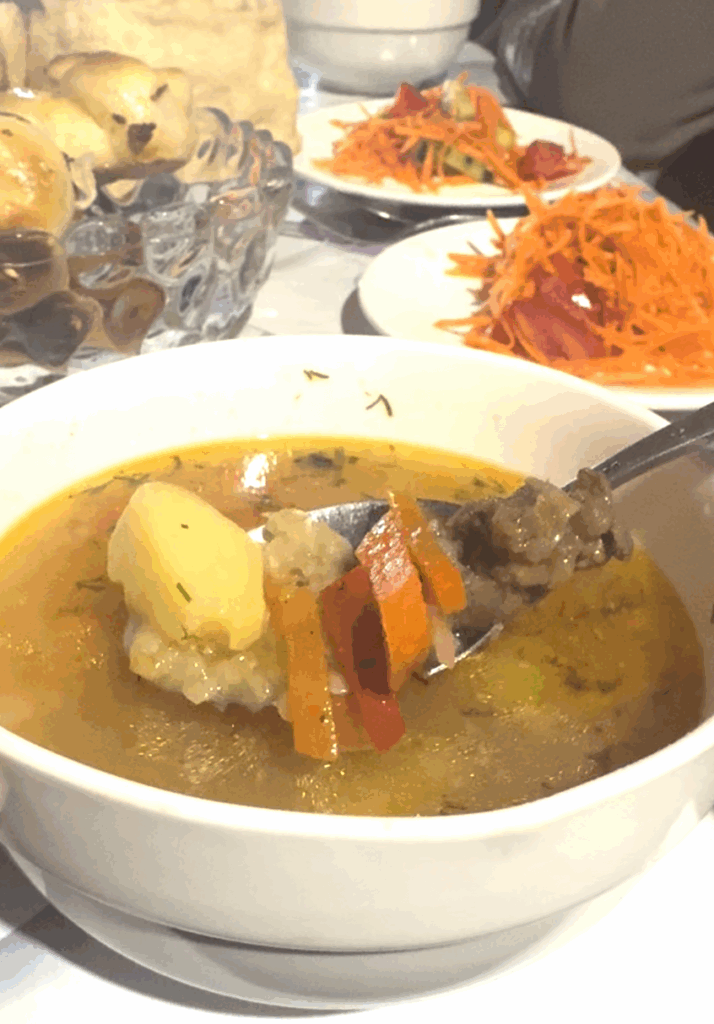
Shorpo is a traditional soup made with a clear broth, meat (often lamb), carrots, potatoes and onions. It’s simple and light compared to other Kyrgyz dishes, but very comforting. It really reminded me of some French family soups, to a certain extent. I particularly enjoyed it in our first yurt camp after a long ride towards Song-kul lake, it felt like the perfect mountain meal. I have to say that most times I tried to order it at restaurants, they were out, but that might just have been unlucky times.
Nan, the Kyrgyz bread
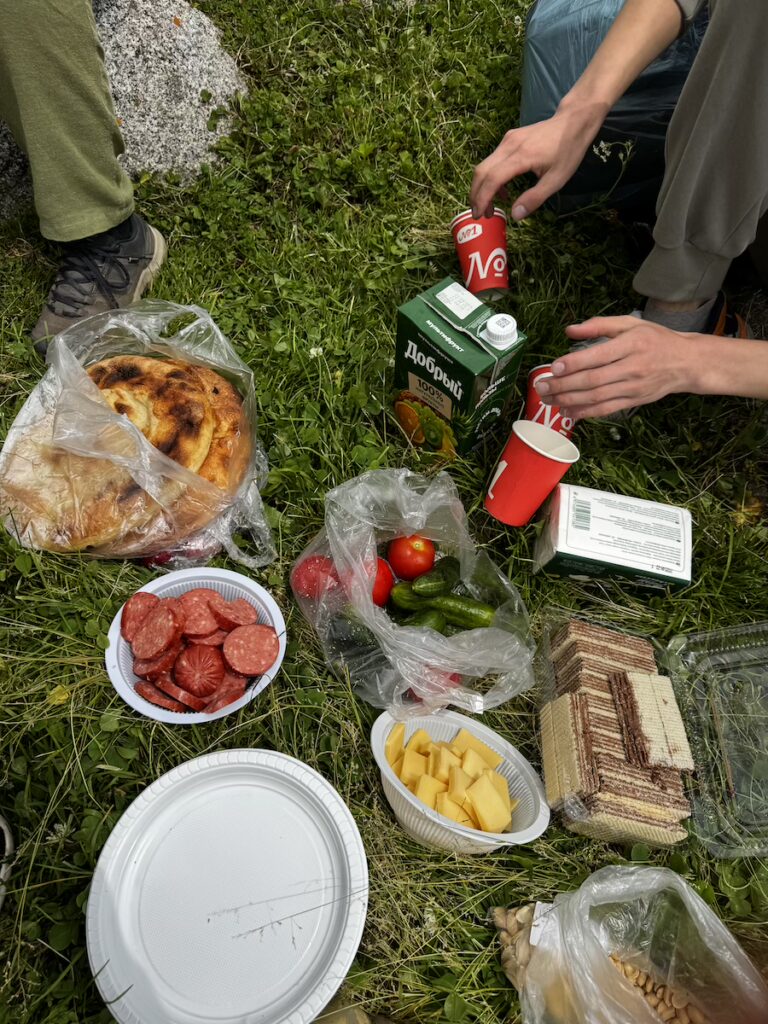
Finally, you can’t talk about Kyrgyz food without mentioning the bread. Known as nan or lepeshka, the round, flat loaves are baked in a tandoor-style oven and served at every meal. The centre is often decorated with a stamped pattern, and it’s considered sacred. You should never place bread upside down. Fresh from the oven, it’s delicious, and I never sat at a table in Kyrgyzstan without a pile of it in front of me!
It’s easy to buy from any market or any bread shop. It’s really the basis of every snack or meal and we often was people just bringing 3 or 4 loaves back home after a day’s work.
Pear lemonade
It’s not a dish per se, but one last thing I have to mention is Kyrgyz pear lemonade: my absolute favourite discovery! You’ll find bottles of it in every mini-market, and it became my go-to drink during the trip. Sweet, fizzy, with a light pear flavour, it was the perfect refreshment. Kyrgyzstan is part of a region where pears and apricots (we also saw loads of these) have been grown for centuries, so the fruit is abundant. Apparently, its popularity dates back to the Soviet era, when pear syrup-based drinks became one of the first tonic beverages across the USSR.
It may sound simple, but it quickly became a daily joy, and I honestly miss it now that I’m back home. If you see it while travelling in Kyrgyzstan, don’t hesitate to try it!
Kymyz, fermented horse milk
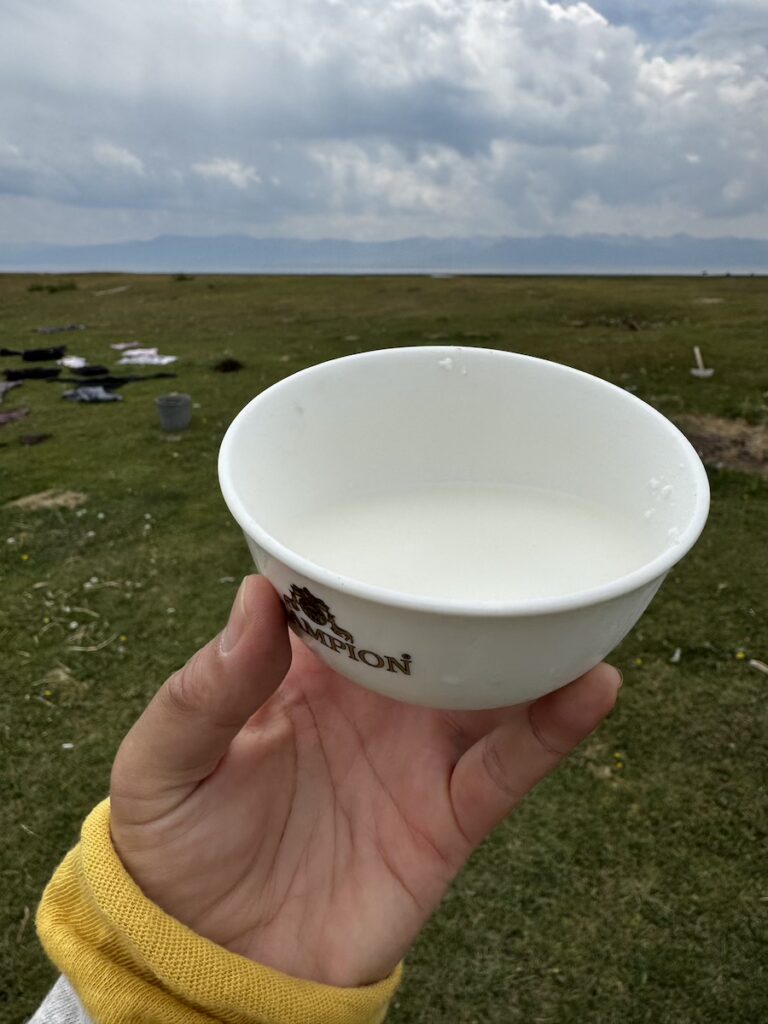
No list of Kyrgyz food and drinks would be complete without mentioning kymyz, fermented mare’s milk. It’s considered the national drink of Kyrgyzstan and has been part of nomadic culture for centuries. Slightly sour, fizzy, and even a bit alcoholic (although my friend kept telling me it wasn’t, but I could 100% feel it), it’s definitely an acquired tast… but one that locals swear by for its health benefits.
We were regularly offered small bowls of it, especially when visiting families, but you’ll often find it sold by the roadside in reused plastic bottles, especially in summer. I personnally didn’t like it that much, but sharing a bowl with our hosts was definitely a way to aknowledge and accept their hospitality!
To conclude this non-exhaustive list (I didn’t even mention samsas which were my favourite snacks!), I would say that although Kyrgyz food may not be as varied as some other cuisines, it has a charm of its own, that I really enjoyed, especially during the mountain trips. It is rustic, hearty, and deeply tied to the land and its people. Most importantly, between bowls of shorpo and stacks of bread, we always felt welcome at the table. And really, isn’t that what travel is all about?
If you’re interested in digging more into Kyrgyz food and beverage, I stumbled upon this very interesting lexicon : Kyrgyz Food Dictionary.
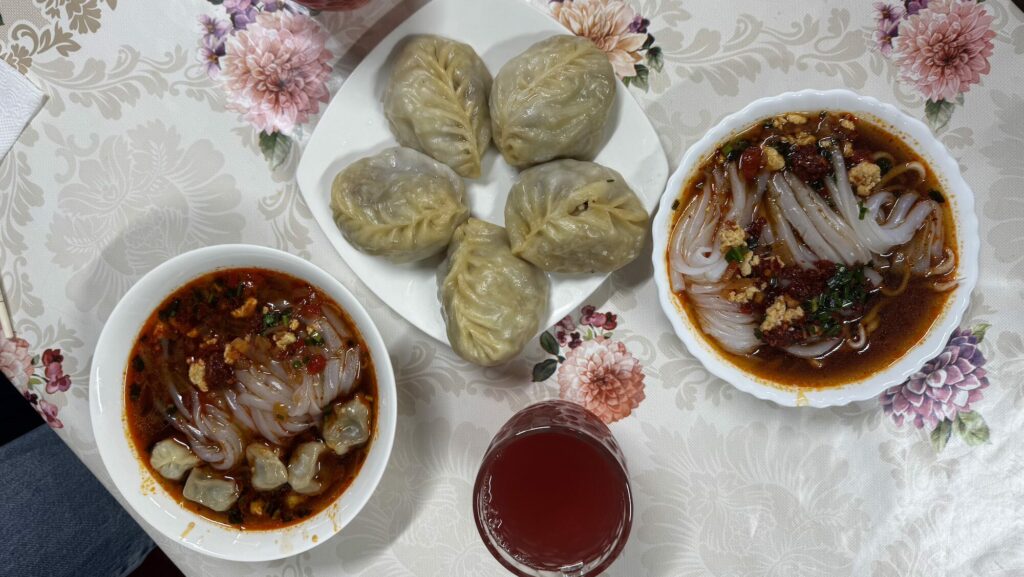
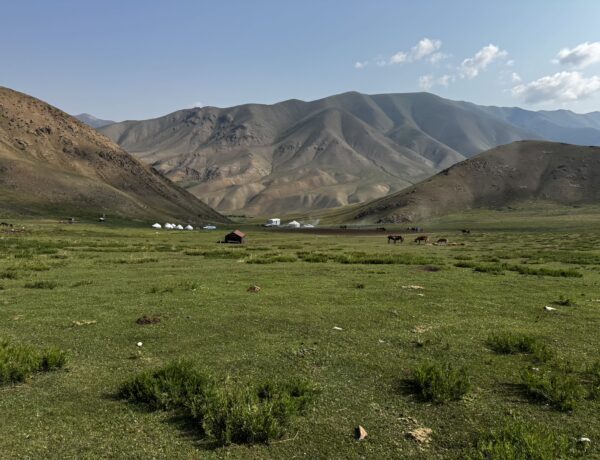
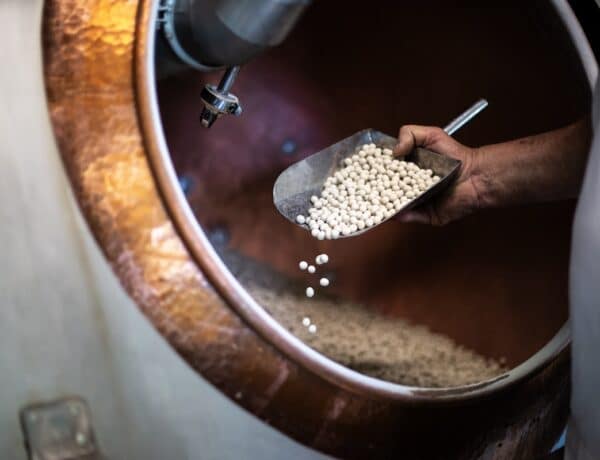
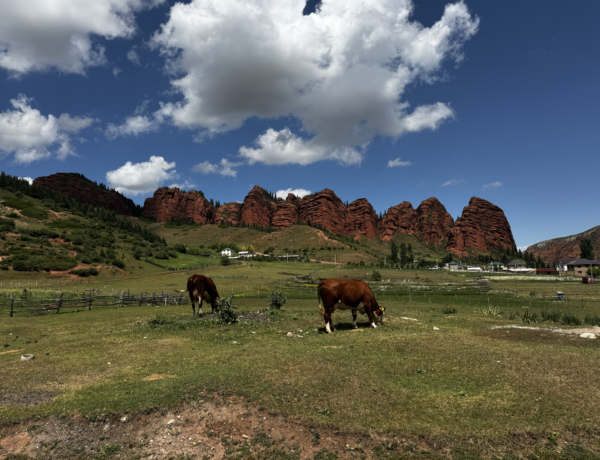
No Comments